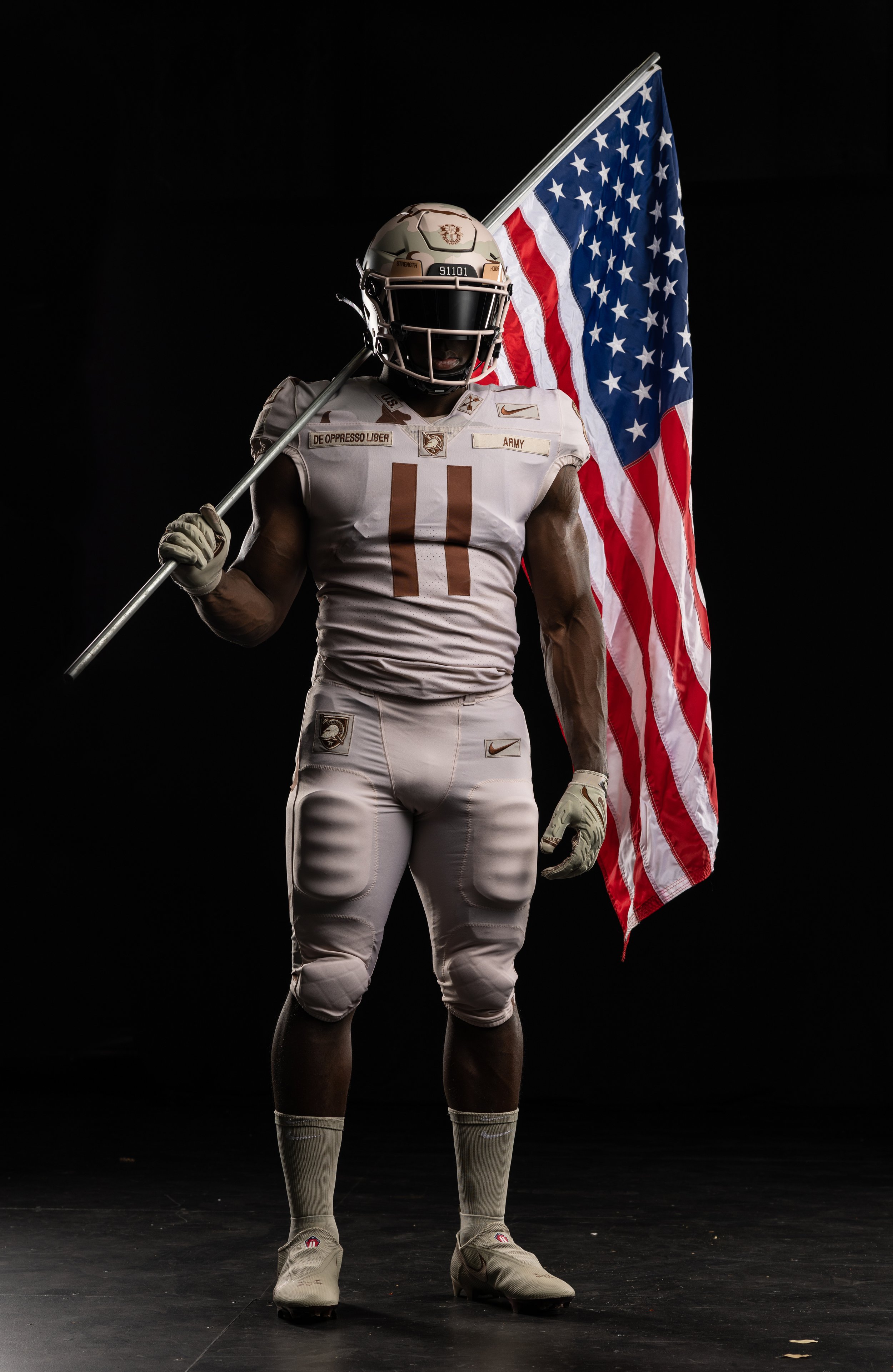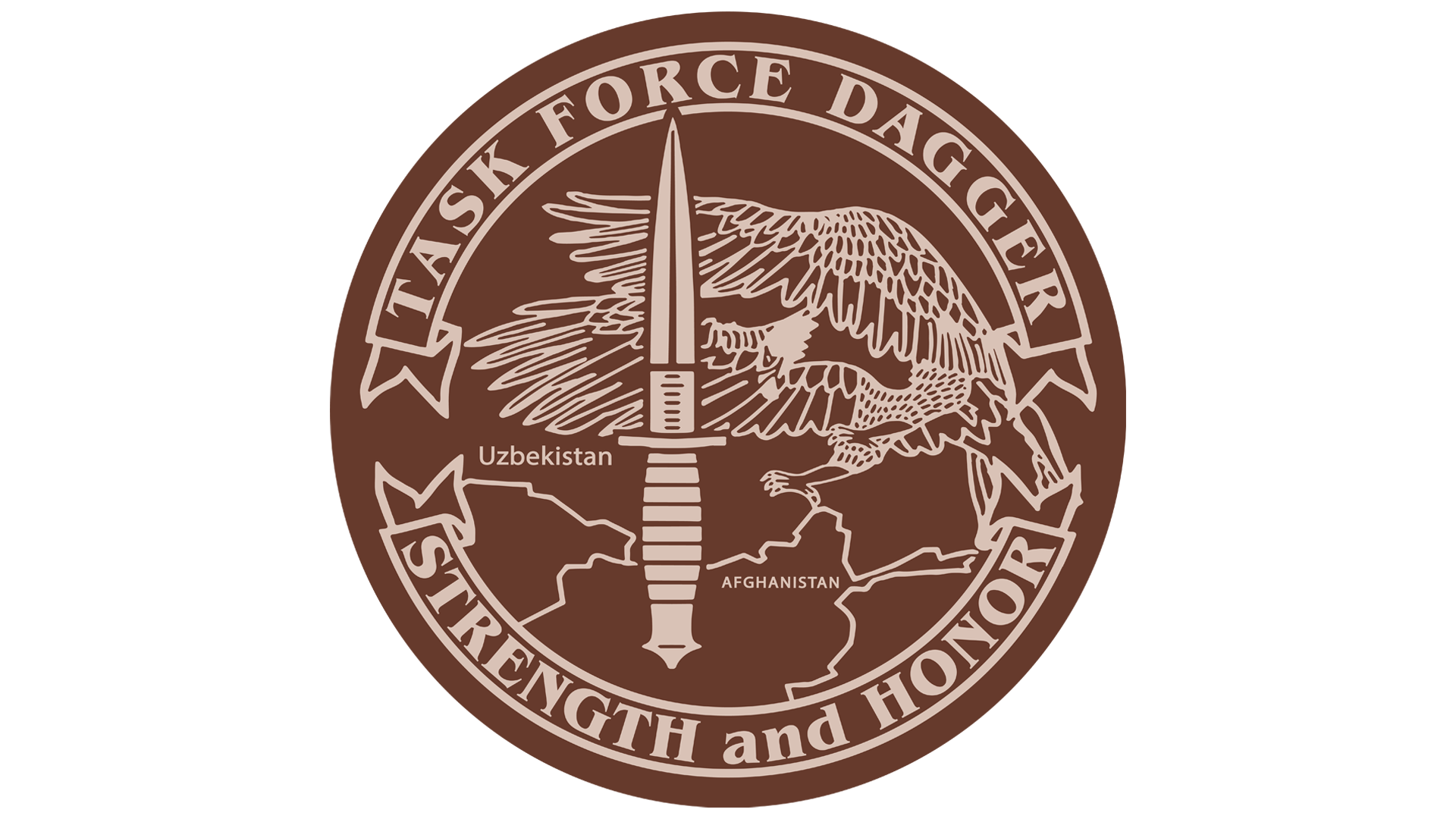
ARMY AND NIKE TEAM UP FOR 2021 ARMY-NAVY UNIFORM TO HONOR THE SOLDIERS OF THE U.S. ARMY SPECIAL FORCES COMMAND
To Free The Oppressed
United States Army Special Forces grew from a collective heritage of military units dating back to WWII, and draws their lineage from the 1st Special Service Force. U.S. Army Special Forces was founded in 1952 with the activation of the 10th Special Forces Group (Airborne). In the decades since then, the United States created more Special Forces Groups as the military increasingly came to rely on their specialty: the conduct of unconventional warfare. Special Forces soldiers have participated in every American military campaign since they first saw combat during the Korean War. These “quiet professionals” bring an extraordinary capability to bear in support of America’s strategic and operational goals worldwide. Repeatedly since their inception, the soldiers of the Special Forces have lived up to their motto: De Oppresso Liber, “To Free the Oppressed.”
In the immediate wake of the 9/11 attacks, Special Forces Operational Detachment Alphas (ODAs) from the 5th Special Forces Group were called upon to rapidly deploy from Fort Campbell, KY to Afghanistan. These are the ODAs we honor with this year’s Army-Navy uniform—the ODAs of Task Force Dagger.











America’s Response – Post September 11
Special Forces ODAs from Task Force Dagger rendezvoused with Central Intelligence Agency officers who, after infiltrating via Mi-17 to mask their arrival, coordinated follow-on support. The key to success in Afghanistan would be to partner with the indigenous anti-Taliban forces, particularly the Northern Alliance, and the Pashtun tribes in the south, in combination with U.S. air power and Special Operations Forces on the ground.
The Northern Alliance
Ahmad Shah Massoud, leader of the Northern Alliance since the mid-1990s, was assassinated by Al Qaeda on September 9, 2001. His death threatened to fracture tenuous relationships among independent Northern Alliance leaders. In the wake of Massoud’s death and the 9/11 attacks, the United States prioritized coordination with Abdul Rashid Dostum, Atta Muhammad Nur, and Fahim Khan, the new principal leaders of the Northern Alliance. These Afghan opposition leaders and their forces represented the main indigenous elements Task Force Dagger first partnered with and enabled throughout the invasion of Afghanistan.

“If there was any fear that we had, it was that we would be worthy of the American people… the people of New York, people of Washington, the people of Pennsylvania, the people of our great country and all those… who lost people on that day. So that was with us constantly, the fear that we would not be worthy of the American people.”
— LT Gen. John F. Mulholland
Task Force Dagger
One of the key Joint Special Operations Task Forces established for Operation Enduring Freedom was known as Task Force Dagger. Task Force Dagger worked hand in hand with Central Intelligence Agency Officers, and included elements from the 5th Special Forces Group, the 160th Special Operations Aviation Regiment (SOAR), and Air Force Special Operations Command Special Tactics groups that were based at “K2,” a former Soviet airbase close to Karshi Kandabad, Uzbekistan.
Task Force Dagger’s aim was to partner with indigenous Afghan warlords and resistance fighters from the Northern Alliance to destroy Al Qaeda and defeat the Taliban. They achieved this primarily by enabling our Afghan partners with precisely targeted close air support delivered by the United States Air Force.

Featured Operational Detachment Alpha Units
-

Operational Detachment Alpha 534
ODA 534 belongs to the 5th Special Forces Group and partnered with Northern Alliance elements and General Atta Muhammad Nur on November 2, 2001. Critical to ODA 534’s mission was enabling partnered Afghan forces to seize the key city of Mazar-e-Sharif. On their way to Mazar-e-Sharif, ODA 534 conducted combat operations alongside their Northern Alliance partners, using direct fire and close air support to eliminate the enemy threat. ODA 534 enabled the seizure of key roads, bridges, and airfields to sustain the fight and bring in humanitarian assistance.
-

Operational Detachment Alpha 555
Affectionately referred to as the “Triple Nickle,” ODA 555 belonged to the 2nd Battalion, 5th Special Forces Group stationed at Fort Campbell, KY. One of the first two ODAs, along with ODA 595, to enter Afghanistan on 19 October 2001, ODA 555 supported Fahim Khan of the Northern Alliance against the Taliban in the Panjshir Valley. ODA 555 worked alongside anti-Taliban militia forces to defeat Taliban forces near Bagram Airbase, utilizing state-of-the-art equipment to call in airstrikes on Taliban targets. In mid-November, ODA 555 followed Khan and his forces into the liberated capital city of Kabul to become the first U.S. military unit to enter the city.
-

Operational Detachment Alpha 574
ODA 574 belongs to 3rd Battalion, 5th Special Forces Group from Fort Campbell, KY. They held the unique responsibility of escorting Hamid Karzai, the new chairman of the Interim Authority that was intended to govern the country after the fall of the Taliban. On November 14th, 2001, ODA 574 boarded helicopters in Pakistan, infiltrated into Afghanistan, and proceeded to coordinate, fight, and win the Battle of Tarin Kowt in conjunction with a small band of fighters loyal to Karzai. Despite setbacks, ODA 574’s efforts proved invaluable in the opening phases of the invasion of Afghanistan as well as the eventual seizure of Kandahar by Afghan and U.S. forces.
-

Operational Detachment Alpha 595
ODA 595 of the 5th Special Forces Group arrived to assist Northern Alliance forces and General Abdul Dostum on October 19, 2001. Splitting into smaller three- and six-man teams to cover more ground, ODA 595 used borrowed horses to navigate the difficult terrain with their Northern Alliance partners towards the city of Mazar-e-Sharif. ODA 595 coordinated precision air strikes to destroy Taliban and Al Qaeda strongpoints. Their ability to adapt and build rapport with Afghan partners enabled Task Force Dagger to inflict heavy casualties on Taliban and Al Qaeda forces and leadership.

“There’s tough parts about this mission, but I think it’s a testament to the power of what small teams that are enabled and empowered and resourced can do in incredible, challenging and complex situations”
— Mark Nutsch, former commander ODA 595
The Horse Soldiers
When Task Force Dagger arrived, roughly forty-eight hours after the Central Intelligence Agency officers, Dostum was already attacking the Taliban lines in force.
After a rocky start, U.S. forces were able to successfully partner with the Northern Alliance and coordinate B-52 air strikes with horse-mounted charges to create one of the most iconic chapters in American military history. In the rough terrain of Afghanistan, Special Forces soldiers—some of whom did not know how to ride—found themselves on horseback alongside our Afghan partners. The Taliban surrendered to Dostum three weeks later.

NOTED ORGANIZATIONS
-

Night Stalkers
The 160th Special Operations Aviation Regiment (SOAR) is the premier Special Operations rotary wing aviation unit in the United States Army. During the invasion of Afghanistan in 2001, the 160th SOAR “Nightstalkers” transported the ODAs from their jumping-off point at Karshi-Khanabad (K2) Airbase in Uzbekistan to their insertion points in Northern Afghanistan. Operating in MH-47E ‘Chinook’ helicopters, CH-47s modified for special operations missions, the Nightstalkers traversed harsh landscapes, including mountain passes so high that flight crews and passengers required oxygen to deliver their ODAs to their landing zones.
-

Special Activities Division
In late-September 2001, elements from the Central Intelligence Agency Special Activities Division, code named “Jawbreaker,” used a CIA-owned Mi-17 helicopter to insert into the Hindu Kush mountains in Afghanistan to establish contact with Northern Alliance commanders. In preparing the way for Army Special Operations Forces, “Jawbreaker” team members established a joint intelligence cell that gathered locations of Taliban and Al Qaeda leadership, forces, and training camps, giving Task Force Dagger leadership the operational picture and targets for U.S. air power.
-

Air Force Special Operations Command
Air Force Special Operations Command, the special operations component of the U.S. Air Force, provided the unit that became Joint Special Operations Force–North under the command of Air Force Colonel Frank J. Kisner. With the arrival of the 5th Special Forces Group, Kisner merged his staff with that of Colonel John. F. Mulholland and subordinated himself to COL Mulholland as his Deputy Commander. Air Force Special Operations provided the air support that broke the back of the Taliban, and Air Force Combat Controllers assisted in coordinating and calling in airstrikes with Special Forces ODAs.
An Enduring Legacy
The personnel of Task Force Dagger answered our nation’s call in a time of great uncertainty. America reeled from the attacks on September 11, 2001, and though it took long months and years for New York City, Washington D.C., and Pennsylvania to clean up the rubble, these ODAs and those who supported them deployed into an incredibly complex situation even as the fires still burned at Ground Zero. They represented the tip of America’s spear aimed at the heart of Al Qaeda and the Taliban.
Our nation remembers and honors the soldiers of these ODAs and of Task Force Dagger—some of whom continue to serve as Special Forces operators to this day. Their sacrifices, and those of the ones who never came home, are emblazoned on these uniforms. We must never forget that no matter the uncertainty or the darkness at hand, Army Special Operations soldiers stand ready to overcome whatever challenges our people ask them to face.
This uniform represents the undaunted courage of these ODAs, as well as those who supported them. After 9/11/01, America called upon them to stand tall and take the fight to a distant enemy under extremely adverse conditions. They readily answered that call.
De Oppresso Liber.





























